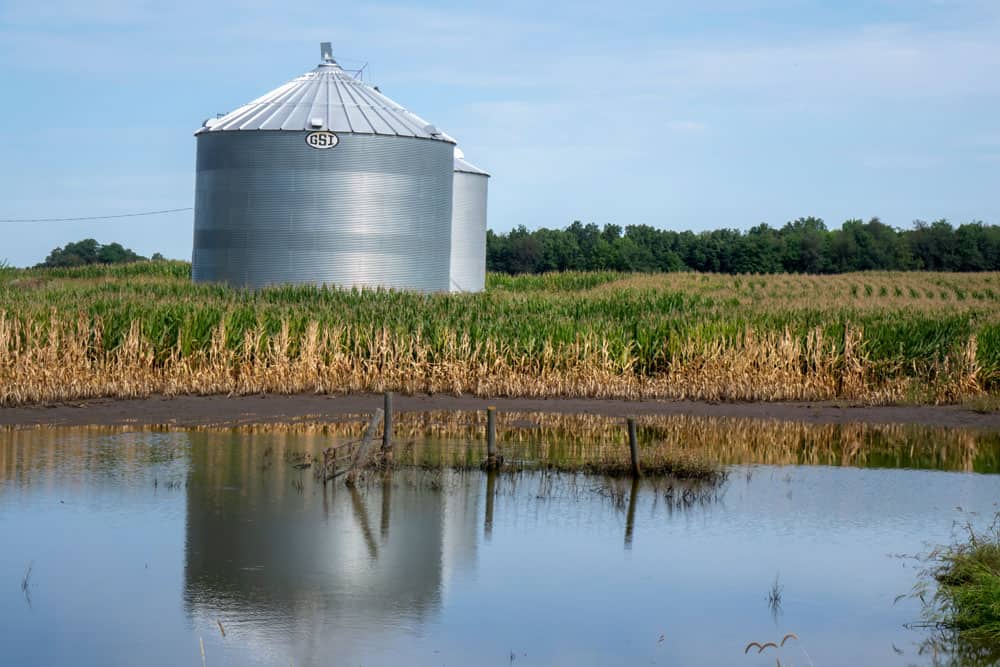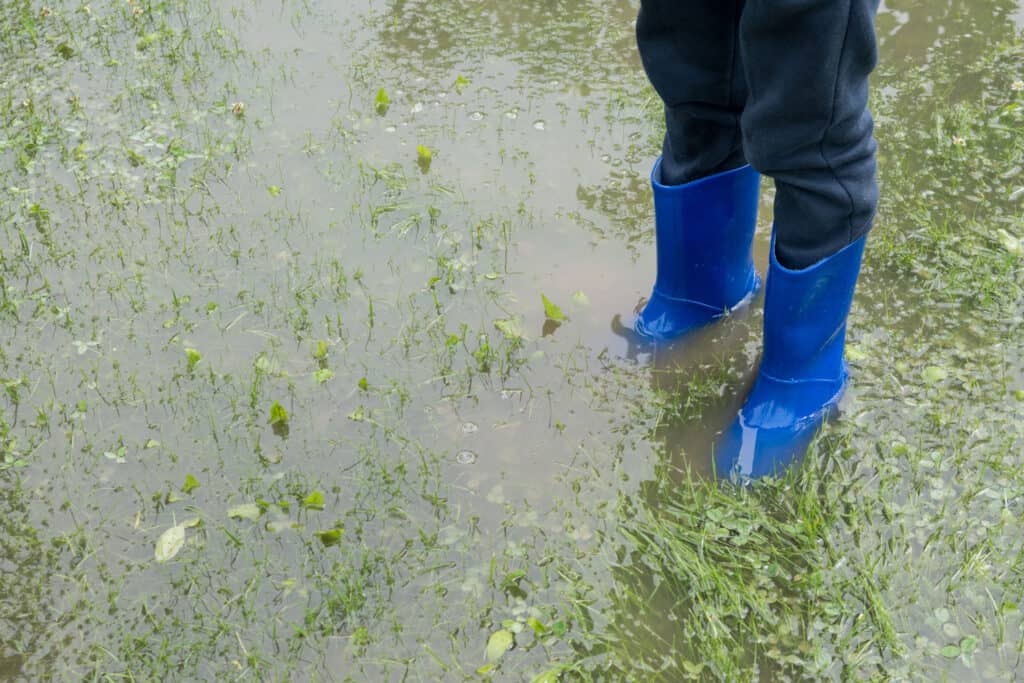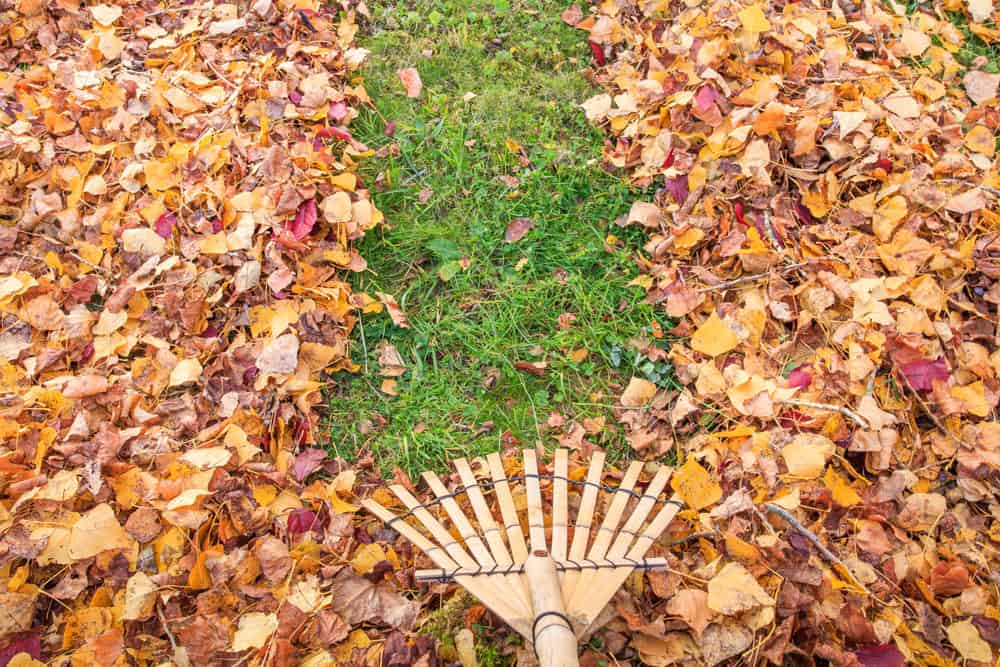
For most people who move into the Michigan area, one motivating factor that causes them to do so is to have a great location near Lake Erie. In the case of a nature-loving person such as yourself, it’s clear that moving to the state yields opportunities and experiences that can’t be found anywhere else in the United States.
But this doesn’t necessarily mean that you should have your yard look like another Great Lake as well.
While your appreciation for Lake Erie is one that makes the idea of moving to Michigan one worth working towards, the various intense weather conditions in the area make matters fairly difficult. Standing water in a yard is one particular end result of condition-related predicaments you should watch out for.
Generally, flooding in a front or backyard is caused by a number of different factors—all of which make matters worse when fall swings around. Although such a problem may seem like no more than a minor inconvenience that will sort itself out, it can quickly snowball into a bigger problem that bears the following implications:
Before we go into the whole idea of saving your property from the issues brought about by flooded yards, it’s essential to understand why such issues happen in the first place.
In the state of Michigan, the issue in question affects thousands of homes all year round because the area has a naturally damp environment. The reason for this lies in the fact that the conditions of the state are conducive to something called the “Lake Effect”—something that results in large amounts of
rain being dumped on exposed yards in a matter of hours.
Apart from copious amounts of precipitation and the Lake Effect, another common reason standing water pools up in a yard is that a home has improper drainage solutions and systems in place. Unfortunately, these same issues can result in water building up easily and lingering around for much longer, even during aggressively sunny days!
Given everything that we’ve talked about so far, you’re probably wondering about what exactly
you can do to best manage the presence of standing water on your property’s yard. Successfully managing the issue in question, however, all boils down to using two kinds of solutions: functional landscaping and drainage work.
If your home’s yard begins to experience regular occurrences of standing water, then it’s ideal to hire a professional landscaper that can re-contour your grass and garden to avoid flooding. On top of re-contouring, however, it’s also ideal that you double up your contra-flooding efforts by enlisting the services of a professional.
Although there are many different challenges that you can expect when living in a state like Michigan, yard flooding or standing water is a type of issue that one should be especially mindful of. By arming yourself with the necessary knowledge and enlisting the services of an expert, you’ll be able to ensure that you protect your property from the issue in question with ease!
We’re the highest-rated drainage and waterproofing contractor in Belleville, Van Buren Township, and Sumpter that specializes in services such as backyard drainage and drain tile installation. Get in touch with us today!


[Updated April 2022]
Many people would agree that it’s best to do significant landscaping during the fall. Spring may be the season that most people think about updating their yards, but certain factors determine that the best way is during the transition to winter.
Whether you’re planting, pruning, or renovating your lawn, there are many reasons fall is the ideal season for landscaping. For one, fall has increased moisture and cooler temperatures. This is beneficial for plans because it allows them to adjust to their environment.
Aside from that, irrigation and drainage may also run in the yard, and those should be prepared in time for the coming cold weather. So, what has to be done in fall landscaping? What should you not do? Read on below to learn more.
Most landscaping projects involve adding new plants, be it shrubs or even trees. As stated before, fall is an excellent season for plants because they can grow better. If you’re transplanting plants, it reduces the “shock” that a plant experiences, letting it grow healthier just before the changing seasons from cold to hot.
A more practical reason you should do your landscaping project is that landscaping companies aren’t hectic during this time, and you can book workers to do the task faster.
Aside from planting new plants or maintaining old ones, your lawn is also something you could work on during the fall. However, there are extra steps that must first be taken care of. Since a lawn is a flat surface, it will accumulate a lot of snow when winter comes.
Your lawn should be adequately fed with a winter fertilizer, as this provides your lawn with the nutrients it needs as it enters the winter season. Aside from that, you can also take other steps such as aerating, thatching, and overseeding. Remember that the window of time you have for overseeding is much shorter during the fall, so you need to accomplish this before or after winter.
If your yard has irrigation or drainage, it’s also something to be prepared for the cold winter months.
Since fall is a pretty relaxed season, you should take it upon yourself to check on the current state of your irrigation and drainage. If it’s appropriately winterized (prepared for the ice), then all is well. If not, it’s best to contact a drainage company to work on it.
When landscaping during the fall, below are some things that you should note for a more successful project.
Plants should not be fed because fall is a season that becomes dormant in response to the upcoming cold. If you provide your plant fertilizer, it’s a risk because softwood will grow, particularly vulnerable to the cold yet to come.
If the cold gets to your plants, they will die. However, you should feed shrubs and trees fertilizer. They store their energy during the winter, sustaining them instead of using the food for growth until the next season.
Pruning refers to removing specific portions of a plant that are dead for healthier plant growth. Ideally, pruning should be done during the fall because, as stated earlier, the growth period of plants is ending, and they are entering dormancy in time for winter.
Radical-selective pruning should be done after the winter. This is because it intrudes on potential plant growth, as they will be frozen during the winter.
Weed control is a measure that’s done regardless of the season, but it should also be done during the fall as well. If left unattended, weeds will freeze along with your plants during the winter months, affecting them.
If they hit dormancy, they will be harder to remove, and it’s very time-consuming to do so because you can only remove them by hand-pulling.
Fall is a relaxing season of scarves and pumpkin spice, but that’s not all you should be doing. It’s only a matter of time before the cold winter months arrive, so you should make sure that your yard is well-prepared through landscaping.
Sir Williams Drainage and Waterproofing Solutions provide quality landscaping services in Michigan, serving clients with only top-notch services. If you need professional help because you can’t handle the work on your own, please don’t hesitate to contact us!